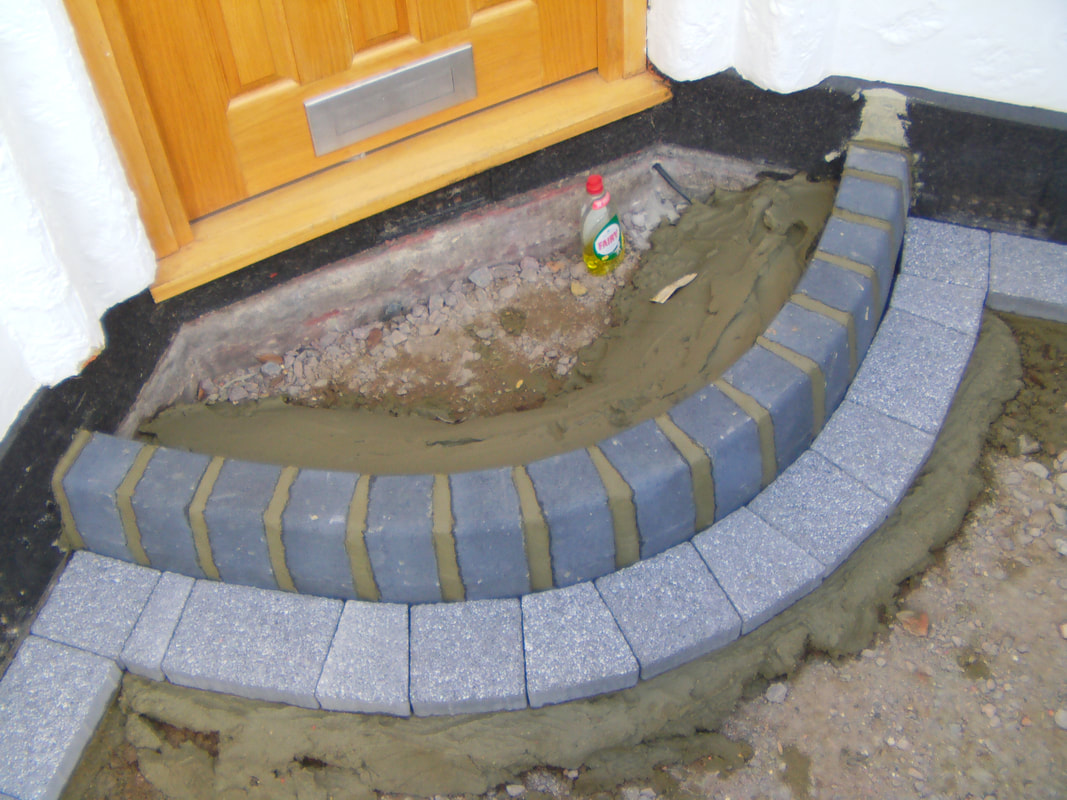|
This article contains affiliate links
Very often when confronted with a new project there is always a desire to make things quick and easy. If you are building a new patio or driveway, excavation and base work can be expensive and laborious.
Many times people wonder if you can simply lay over the old surface to save time and money. This is no less the case with block paving patios and driveways. In this article we will investigate to answer the question, can you pave over block paving? Levels
Before we dive into the exploration of suitable block paving base work we need to address surface levels. Whenever you desire to lay directly over old paving you have to ask the question, will the levels allow me? Look at where your patio or driveway level meets the home, pavement and sideway. Do you really want an awkward step at these points? Will you need to change the height of gates and garage doorways? Paving should not go any higher to your homes damp proof course than two bricks high (150mm). This is to prevent too much moisture being exposed to the walls of your home. Occasionally some people attempt to ramp new paving up and over existing paving for transition levels to meet. This not only looks terrible but can be hazardous. Therefore in terms of finished levels it is not a good idea to pave over block paving. Block paving construction
Block paving is a popular choice for the installation of surfaces which take vehicular traffic. There is a good reason many driveways are built using this method. Block paving relies upon the fundamentals of flexible construction. This is whereby construction can resist destructive forces by allowing small movements within its structure. This can be seen in the engineering of tall buildings or floor levels which take transitory loads. This is also the case with block paving! The daily movements of a heavy vehicle are concentrated onto four, small, surface, areas. Hence the surface needs a small amount of flexibility built into the paving. This is why block paving is laid upon a layer of compacted sand. When sanded the blocks interlock into a continuous, flexible, wearing, surface. Edgings are concreted in to provide a ridged and retaining barrier to the perimeter. This enables the central screed to remain compacted with no displacement. The problem with paving over block paving
The biggest problem you have with paving over block paving is it is flexible. Meaning you do not have a rigid base to lay upon. This means your new paving will probably crack and distort over time.
This combined with the difficulties of surrounding levels means you should not really pave over block paving. Not only that you cannot guarantee the base of the existing blocks was built correctly. If it wasn’t then there is an even higher threat it will distort and crack overtime. Excavating the old base means you can rest assured the job has been carried out correctly. By trying to save money on excavation you will more often than not, spend more in the long run.
Thank you for reading our article on can you pave over block paving. Did it help in your research? If so why not share it via the tabs below, this really helps us to write more useful content in the future.
If you are undertaking your very own paving project why not visit our recommended equipment page?
'As an amazon associate I earn from qualifying purchases'
1 Comment
12/21/2022 07:58:50 pm
Thank you for mentioning that you should pay attention to the intersection of your patio's or driveway's level with the road, sidewalk, and sideways. My sister wants the driveway in front of her house to be paved. I would advise her to hire a driveway paving expert to ensure that the driveway level fully meets her house.
Reply
Leave a Reply. |
The Author
|
Landscaping services across Buckinghamshire, Amersham, Aylesbury & High Wycombe
Hyde Heath, Amersham, Buckinghamshire |
|











